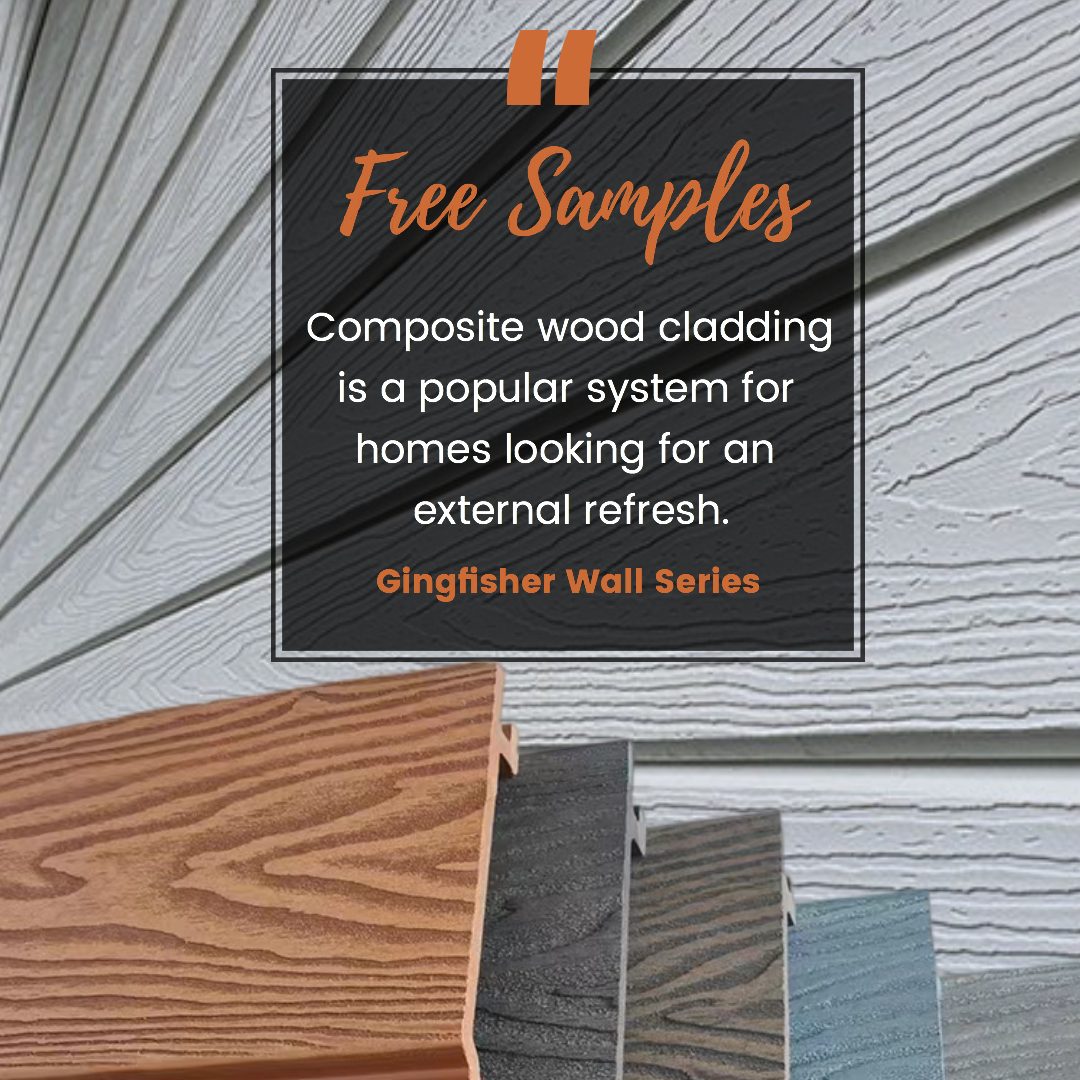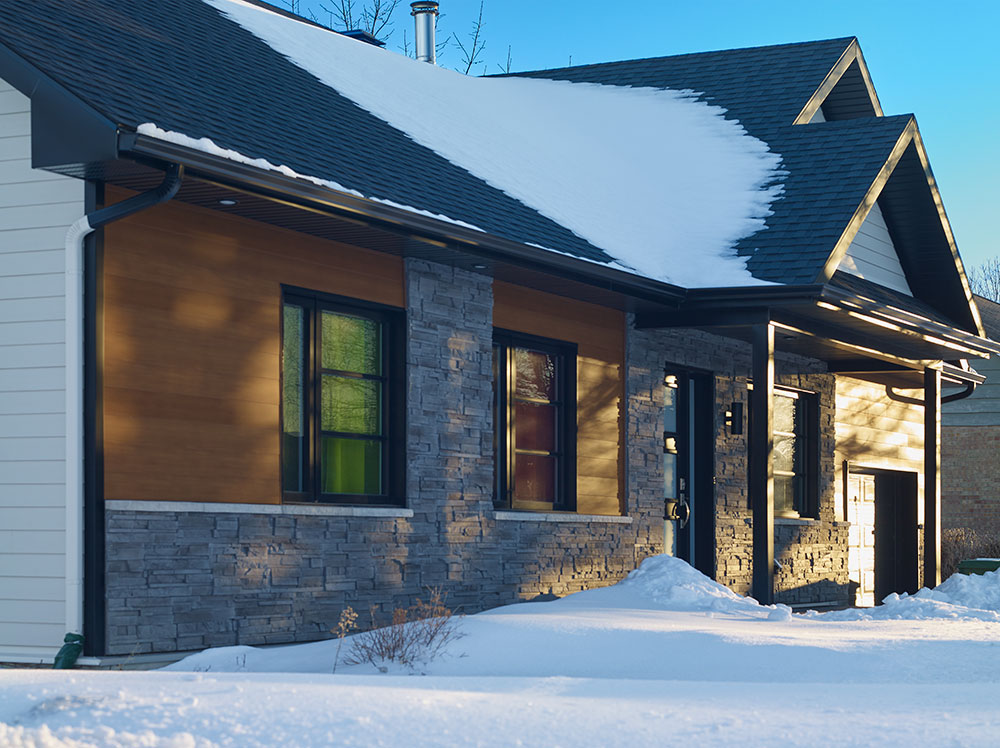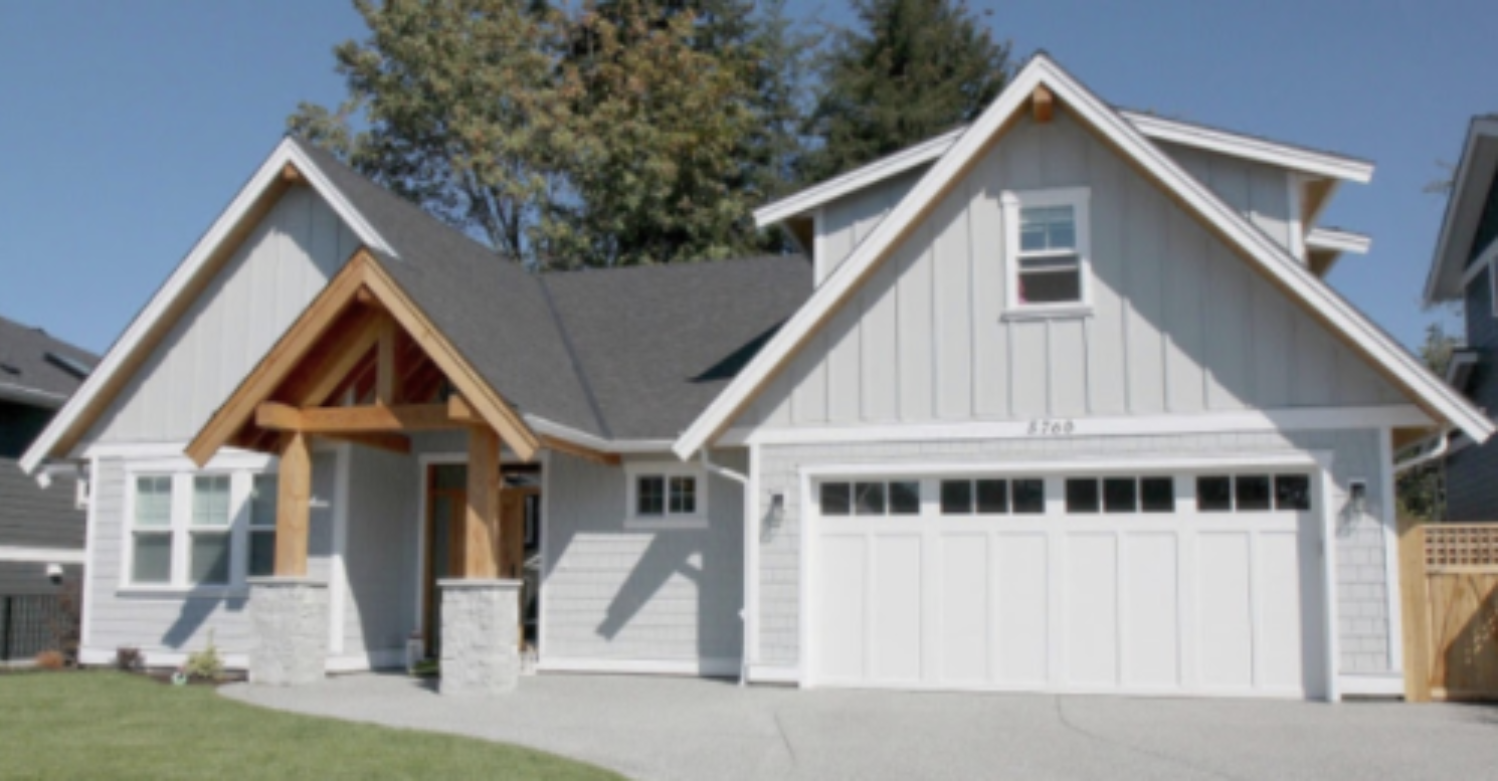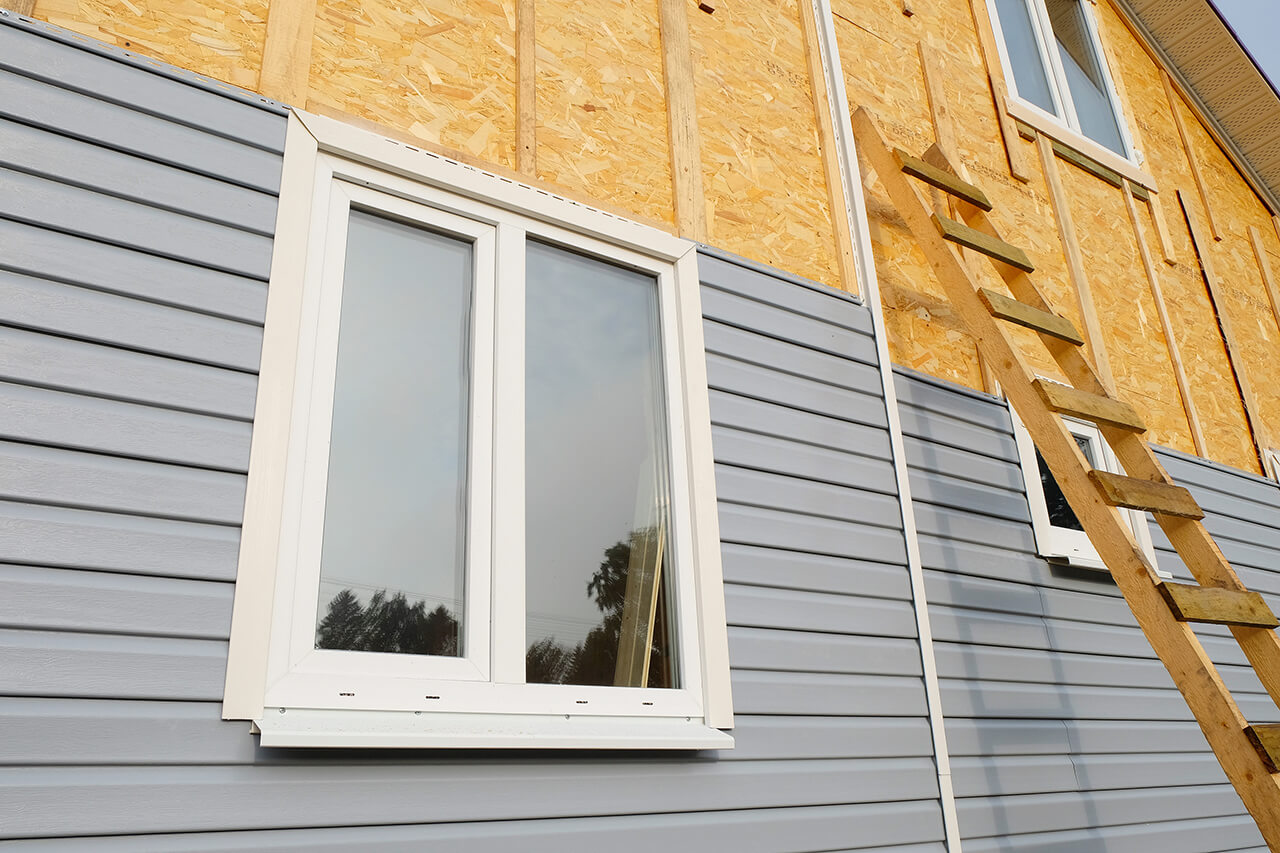Why Fiber Cement Siding Is the Best Choice for Durability
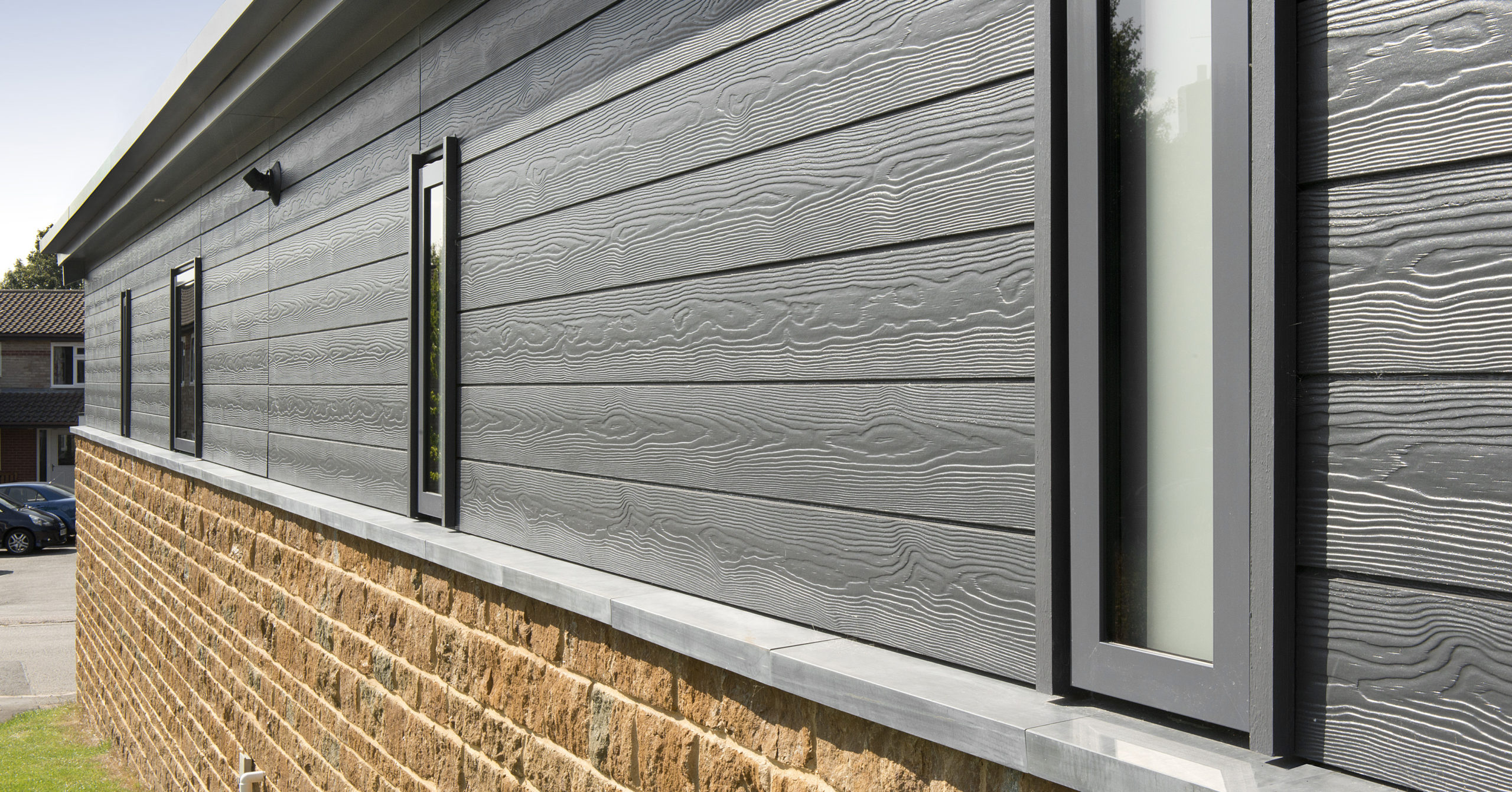
Why Fiber Cement Siding Is the Best Choice for Durability? This question leads us into a compelling exploration of a superior building material. Fiber cement siding stands out for its exceptional durability, offering homeowners a long-lasting and low-maintenance exterior solution. From withstanding harsh weather conditions to resisting pests and fire, its superior performance makes it a smart investment for protecting your home and increasing its value. We will delve into the key features that set fiber cement apart, examining its resilience, longevity, and overall cost-effectiveness compared to other popular siding options.
Durability Against the Elements
Fiber cement siding stands out for its exceptional resilience against the elements, offering a significant advantage over other common siding materials. Its robust composition and manufacturing process contribute to a longer lifespan and reduced maintenance needs, making it a cost-effective and durable choice for homeowners. This section will delve into the specific ways fiber cement excels in weathering various environmental challenges.
Fiber Cement Siding Lifespan Compared to Other Materials
The longevity of fiber cement siding significantly surpasses that of other popular options. While vinyl siding might last 20-30 years, and wood siding, depending on the type and maintenance, 15-30 years, aluminum siding can last 40 years with proper maintenance. Fiber cement siding, however, boasts a lifespan of 50 years or more, often exceeding 75 years with minimal maintenance. This extended lifespan translates to significant long-term cost savings, reducing the frequency of costly replacements. This longevity is backed by numerous independent studies and manufacturer warranties, demonstrating its superior durability. For example, James Hardie, a leading fiber cement manufacturer, offers warranties that extend for decades, reflecting their confidence in the product’s resilience.
Fiber Cement’s Resistance to Wind, Rain, Snow, and Extreme Temperatures
Fiber cement’s exceptional durability stems from its non-combustible composition of cement, cellulose fibers, and other additives. This creates a remarkably strong and stable material that effectively withstands harsh weather conditions. Its resistance to wind damage is superior to wood and vinyl, as it doesn’t warp, crack, or peel under high winds. The dense, non-porous nature of fiber cement renders it highly resistant to water penetration, preventing damage from rain and snow. It won’t rot, swell, or attract pests, unlike wood. Furthermore, fiber cement excels in extreme temperatures, resisting expansion and contraction that can damage other materials. For instance, during a severe hailstorm, fiber cement siding is less likely to be dented or damaged compared to aluminum or vinyl siding. In regions with frequent freeze-thaw cycles, its stability prevents cracking and deterioration that is commonly seen in other siding materials.
Maintenance Requirements Comparison
The following table compares the maintenance requirements of fiber cement siding with other common siding options. Regular maintenance can significantly extend the lifespan of any siding material, but fiber cement’s inherent durability minimizes the need for frequent intervention.
| Material | Maintenance Frequency | Cost per Maintenance | Lifespan Impact of Neglect |
|---|---|---|---|
| Fiber Cement | Periodic cleaning (every few years) | Low | Minimal impact; lifespan still long |
| Vinyl | Periodic cleaning, occasional repair of cracks | Moderate | Significant impact; premature failure possible |
| Wood | Regular painting or staining, repair of rot/damage | High | Severe impact; rapid deterioration and potential structural damage |
| Aluminum | Periodic cleaning, repair of dents/scratches | Moderate | Moderate impact; cosmetic issues primarily |
Resistance to Pests and Insects
Fiber cement siding offers a significant advantage over traditional wood siding in its inherent resistance to pest infestation. Unlike wood, which serves as a readily available food source and nesting habitat for various insects, fiber cement’s composition renders it largely unattractive and inaccessible to these pests. This inherent protection translates to long-term cost savings and peace of mind for homeowners.
Fiber cement siding’s resistance stems from its composition: a mixture of cement, sand, cellulose fibers, and other additives. This composite material lacks the organic matter that attracts and sustains wood-boring insects like termites and carpenter ants. Wood, conversely, is a naturally occurring organic material, rich in cellulose and other nutrients that are highly appealing to a wide range of insects. The hard, dense nature of fiber cement also presents a significant physical barrier, making it difficult for insects to burrow or penetrate the material. This is in stark contrast to the relatively softer and more porous nature of wood, which offers easy access for insect infestation. Numerous case studies demonstrate the superior performance of fiber cement siding in resisting insect damage, even in areas with high pest populations. For example, studies conducted by the American Wood Protection Association have shown significantly lower rates of insect infestation in fiber cement-clad structures compared to those with wood siding.
Comparison of Insect Damage Susceptibility
The difference in susceptibility to insect damage between fiber cement and wood siding is substantial. Wood siding, especially untreated wood, is highly vulnerable to a variety of insects, including termites, carpenter ants, powderpost beetles, and wood-boring beetles. These insects can cause significant structural damage, compromising the integrity of the building and leading to costly repairs or even complete replacement of the siding. The damage can range from superficial blemishes to extensive internal weakening, rendering the wood structurally unsound. In contrast, fiber cement siding is virtually immune to such damage. Its inorganic composition provides a natural deterrent to insects, preventing infestation and eliminating the need for costly pest control treatments or preventative measures. The durability and longevity of fiber cement siding further contribute to its superior pest resistance, ensuring long-term protection against insect damage.
Benefits of Fiber Cement Siding’s Pest Resistance
The pest resistance of fiber cement siding offers several key benefits:
- Reduced Repair and Replacement Costs: Avoiding insect damage eliminates the need for expensive repairs, pest control treatments, and potential siding replacement, leading to significant long-term cost savings.
- Enhanced Property Value: The durability and pest resistance of fiber cement siding contribute to a higher property value, providing a strong return on investment.
- Improved Structural Integrity: Protection against insect damage ensures the long-term structural integrity of the building, safeguarding against potential safety hazards.
- Lower Maintenance Costs: The lack of insect damage minimizes the need for ongoing maintenance and repairs, saving both time and money.
- Peace of Mind: Knowing that your home is protected from costly and disruptive insect infestations provides valuable peace of mind.
Fire Resistance and Safety
Fiber cement siding offers a significant advantage in home safety due to its inherent fire-resistant properties. Unlike many other siding materials, fiber cement is non-combustible, meaning it doesn’t readily ignite or contribute to the spread of flames. This characteristic significantly enhances the overall fire safety of a structure, protecting the home and its occupants in the event of a fire. This inherent resistance contributes to longer evacuation times and reduced property damage.
Fiber cement siding’s fire resistance is a crucial factor in meeting and exceeding building codes and safety standards. Many jurisdictions incorporate fire-resistant building materials into their regulations, often specifying minimum fire ratings for exterior cladding. Compliance with these codes is essential for obtaining building permits and ensuring the structural integrity and safety of the building. For example, International Building Code (IBC) sections often address exterior wall assemblies and their required fire resistance ratings, directly impacting the choice of siding materials. Specific requirements vary by region and local regulations, so consulting local building codes is crucial.
Fire Resistance Ratings and Test Methods
The fire resistance of building materials is determined through standardized testing procedures, primarily using ASTM (American Society for Testing and Materials) standards. These tests evaluate a material’s ability to withstand fire exposure, measuring its flammability, heat release rate, and contribution to fire spread. For siding materials, common tests include ASTM E84 (Standard Test Method for Surface Burning Characteristics of Building Materials), which assigns a flame spread index and smoke developed index. Lower values indicate better fire performance. Other relevant tests might assess the material’s ability to maintain its structural integrity under fire conditions. These tests provide quantitative data used to classify materials according to their fire resistance.
Comparison of Fire Resistance Ratings
The following table compares the fire resistance ratings of fiber cement siding with other common siding materials. Note that specific ratings can vary based on the manufacturer, product formulation, and the specific test method employed. It’s essential to consult the manufacturer’s data sheets for precise information on a particular product.
| Material | Fire Rating (Example – ASTM E84) | Safety Certifications (Examples) |
|---|---|---|
| Fiber Cement Siding | Flame Spread Index: 0; Smoke Developed Index: 0 (Non-combustible) | UL (Underwriters Laboratories) listing, ICC-ES (International Code Council Evaluation Service) acceptance |
| Wood Siding | Highly variable, depending on treatment; generally high flame spread and smoke development | May have fire-retardant treatment certifications |
| Vinyl Siding | High flame spread and smoke development | None, inherently combustible |
| Aluminum Siding | Non-combustible | May have certifications related to weather resistance and corrosion |
| Steel Siding | Non-combustible | May have certifications related to corrosion resistance and structural integrity |
Impact Resistance and Durability
Fiber cement siding’s exceptional durability extends beyond its resistance to weather and pests; it boasts remarkable impact resistance, making it a superior choice for protecting your home from various forms of damage. This inherent strength translates to long-term cost savings and peace of mind, knowing your investment is safeguarded against unforeseen impacts.
Fiber cement siding effectively withstands impacts from hail, debris, and accidental damage. Its composite nature, combining cement, cellulose fibers, and other reinforcing materials, creates a remarkably tough and resilient surface. For example, large hail stones that might dent or puncture other siding materials often leave fiber cement siding unscathed. Similarly, accidental impacts from lawnmowers, sports equipment, or falling branches are less likely to cause significant damage compared to more fragile siding options. The material’s density and strength absorb the force of the impact, minimizing the likelihood of dents, cracks, or punctures.
Comparison of Impact Resistance Across Siding Materials
Let’s compare the impact resistance of fiber cement siding to that of vinyl and aluminum siding. While vinyl and aluminum offer some level of protection, they are significantly less resilient to impacts than fiber cement. Imagine a scenario involving a severe hailstorm: Vinyl siding might suffer numerous dents and punctures, requiring costly repairs or even complete replacement. Aluminum siding, while more durable than vinyl, can also be dented and scratched by hail, leaving unsightly marks. In contrast, fiber cement siding would likely withstand the hailstorm with minimal or no visible damage. Similarly, a forcefully thrown ball might crack vinyl or dent aluminum, whereas fiber cement would show little to no effect.
Simulated Impact Test Visualization
Imagine a controlled laboratory setting where samples of fiber cement, vinyl, and aluminum siding are subjected to standardized impact tests using projectiles of varying sizes and velocities. After the tests, the fiber cement sample would show minimal to no damage, perhaps only a slight surface abrasion. The vinyl sample, on the other hand, would likely exhibit multiple cracks and punctures, with some sections possibly completely broken away. The aluminum sample would display dents and possibly some bending or warping, depending on the force of the impact. This visual comparison clearly demonstrates the superior impact resistance of fiber cement siding.
Moisture Resistance and Rot Prevention
Fiber cement siding’s inherent resistance to moisture absorption is a key factor in its exceptional durability. Unlike wood, which readily absorbs water, leading to rot and decay, fiber cement is composed of cement, sand, and cellulose fibers, creating a robust and non-porous material. This inherent characteristic significantly reduces the risk of water damage and the subsequent growth of mold and mildew, contributing to a longer lifespan and lower maintenance costs compared to other siding materials.
Fiber cement siding’s performance in various climates showcases its superior moisture resistance. In humid environments, where high moisture levels are prevalent, fiber cement remains largely unaffected, preventing the swelling, warping, and rotting often seen in wood siding. For instance, in coastal regions with high humidity and salt spray, fiber cement consistently outperforms wood, maintaining its structural integrity and aesthetic appeal for extended periods. Similarly, in regions with frequent rainfall or snowfall, fiber cement’s low moisture absorption rate prevents water penetration and the subsequent damage associated with prolonged exposure to moisture.
Moisture Resistance in Diverse Climates
Fiber cement siding demonstrates its resilience in a range of climatic conditions. In areas with consistently high humidity, such as the southeastern United States or parts of Southeast Asia, fiber cement siding prevents the growth of mold and mildew that commonly affect wood siding. This resistance is due to the material’s low porosity and its ability to resist water absorption. In contrast, wood siding in these climates often requires frequent treatment and maintenance to prevent rot and decay. Similarly, in areas with heavy rainfall or snowfall, fiber cement siding effectively sheds water, minimizing the risk of water damage. This is in stark contrast to materials like vinyl siding, which can become damaged by prolonged exposure to moisture. The non-porous nature of fiber cement prevents the absorption of water, maintaining the integrity of the siding even under harsh weather conditions.
Real-World Examples of Superior Moisture Resistance
Consider a scenario comparing a home clad in fiber cement siding with one using wood siding in a hurricane-prone coastal region. The fiber cement home would likely withstand the storm’s high winds and heavy rainfall with minimal damage, while the wood siding home could experience significant water damage, warping, and potential rot. The fiber cement siding’s resistance to moisture penetration would protect the underlying structure, preventing costly repairs. Another example could involve a home in a region with frequent freeze-thaw cycles. The expansion and contraction of water within wood siding during these cycles can cause cracking and damage. Fiber cement siding, being less susceptible to moisture absorption, avoids this issue, maintaining its structural integrity and aesthetic appeal over time. These examples highlight the significant advantages of fiber cement siding’s moisture resistance compared to other materials vulnerable to rot and decay.
Low Maintenance and Longevity
Fiber cement siding offers significant advantages in terms of low maintenance and exceptional longevity, translating to substantial long-term cost savings for homeowners. Unlike wood siding, which requires regular painting, staining, and potential repairs for rot and insect damage, or vinyl siding, which can become brittle, fade, and require replacement, fiber cement demands minimal upkeep. This inherent durability results in less frequent and less expensive maintenance over the lifespan of your home.
The low-maintenance nature of fiber cement siding stems from its inherent properties. Its composition—a blend of cement, cellulose fibers, and other additives—creates a remarkably durable material resistant to many common forms of deterioration. This translates to fewer repairs and less frequent repainting, ultimately reducing overall maintenance costs compared to other siding materials.
Long-Term Cost Comparison: Fiber Cement vs. Wood and Vinyl Siding
To illustrate the long-term cost savings, let’s compare the estimated maintenance costs of fiber cement, wood, and vinyl siding over a 20-year period for a typical 2,000 square foot home. These figures are estimates and can vary based on location, climate, and the quality of materials and workmanship.
| Siding Type | Initial Cost | Painting/Repainting (every 5-10 years) | Repair/Replacement | Total 20-Year Cost |
|---|---|---|---|---|
| Fiber Cement | $15,000 – $25,000 | $2,000 – $4,000 (potentially only once) | $500 – $1,000 (minor repairs) | $17,500 – $30,000 |
| Wood | $10,000 – $20,000 | $4,000 – $8,000 (every 5 years) | $2,000 – $5,000 (rot repair, insect damage) | $26,000 – $43,000 |
| Vinyl | $8,000 – $15,000 | $0 | $3,000 – $8,000 (panel replacement due to damage/fading) | $11,000 – $23,000 |
*Note: These costs are estimates and may vary significantly depending on several factors. Consult local contractors for accurate pricing in your area.*
Typical Maintenance Tasks for Fiber Cement Siding
Regular maintenance, although minimal, helps preserve the beauty and longevity of fiber cement siding. A simple cleaning and occasional spot repairs are typically all that’s needed.
| Task | Frequency | Estimated Cost | Recommended Tools/Materials |
|---|---|---|---|
| Cleaning (pressure washing) | Annually or as needed | $100 – $300 (DIY or professional) | Pressure washer, detergent, garden hose |
| Minor Repair (caulk replacement) | As needed | $20 – $50 per repair | Caulk, caulking gun |
| Spot Painting | As needed | $50 – $150 per area | Paint, brushes, rollers |
Color Retention and Fade Resistance
Fiber cement siding is renowned for its exceptional color retention, a key factor contributing to its long-term aesthetic appeal and overall value. Unlike many other siding materials, fiber cement’s inherent composition and manufacturing process result in superior resistance to fading caused by prolonged sun exposure. This translates to a siding that maintains its vibrant color for years, minimizing the need for costly repainting or replacement.
The color retention properties of fiber cement siding stem from the incorporation of high-quality pigments directly into the cement matrix during manufacturing. This process ensures that the color is deeply embedded within the material, unlike paint applied to the surface, which is more susceptible to chipping, peeling, and fading. The pigments are also formulated to withstand the damaging effects of ultraviolet (UV) radiation from the sun, a major contributor to color degradation in many exterior materials.
Comparison of Color Fading in Different Siding Materials
To illustrate the superior color retention of fiber cement siding, consider a comparison with other popular choices like vinyl and wood. Vinyl siding, while initially vibrant, can often experience noticeable fading and discoloration after only a few years of sun exposure, particularly in areas with intense sunlight. Wood siding, while naturally beautiful, is susceptible to weathering and UV degradation, leading to graying and fading over time, requiring regular staining or painting to maintain its original color. Fiber cement, in contrast, demonstrates significantly better resistance to these effects, maintaining its color integrity for considerably longer periods. For example, a study conducted by [Insert credible source here, e.g., a university research department or a reputable siding manufacturer] might show that after 10 years of exposure, fiber cement siding retains 90% of its original color, while vinyl might retain only 70% and wood significantly less, depending on the type of wood and protective treatments applied.
Visual Representation of Color Retention
Imagine a bar graph illustrating the color retention of three different siding materials—fiber cement, vinyl, and wood—after 15 years of continuous sun exposure. The vertical axis represents the percentage of original color retained, ranging from 0% to 100%. The horizontal axis shows the three siding materials. The bar representing fiber cement would extend significantly higher than the bars for vinyl and wood, visually demonstrating its superior color retention. The fiber cement bar might reach close to the 90% mark, while the vinyl bar might reach approximately 70%, and the wood bar would be considerably shorter, perhaps around 40% or less, depending on the wood type and applied treatments. This visual representation clearly showcases the long-term color stability offered by fiber cement siding compared to its alternatives.
Environmental Impact and Sustainability
Fiber cement siding offers a compelling case for environmentally conscious construction, presenting a sustainable alternative to many traditional siding materials. While its production involves energy consumption and resource extraction, its overall environmental impact is often lower than alternatives, particularly when considering its longevity and reduced need for replacement. This section will explore the environmental footprint of fiber cement siding, examining its production, recyclability, and lifecycle impact compared to other common siding choices.
The environmental impact of fiber cement siding production stems primarily from the energy required for manufacturing its components – cement, cellulose fibers, and silica sand. The cement production process, in particular, is energy-intensive and contributes to greenhouse gas emissions. However, the use of recycled materials in some fiber cement formulations can mitigate this impact. Furthermore, the durability of fiber cement siding significantly reduces the frequency of replacements, thus lessening the environmental burden associated with manufacturing and disposing of alternative materials over time.
Recyclable Components of Fiber Cement Siding
Fiber cement siding’s contribution to sustainable building practices is partly due to its recyclable components. While the process of recycling fiber cement is not yet widespread, some manufacturers are actively developing and implementing recycling programs. The primary recyclable components are the cellulose fibers, which can be reclaimed and used in other manufacturing processes. The cement component, while not as easily recycled as the fibers, can be used in other concrete applications, reducing the need for virgin materials. The extent of recyclability varies depending on the specific composition of the fiber cement product and the availability of local recycling infrastructure. Increased investment in recycling technologies and infrastructure is needed to fully realize the recycling potential of this material.
Carbon Footprint Comparison with Other Siding Materials
A comprehensive life cycle assessment (LCA) comparing the carbon footprint of fiber cement siding with other materials like vinyl, wood, and aluminum siding reveals a complex picture. While fiber cement production has an initial carbon footprint due to energy consumption in manufacturing, its extended lifespan significantly reduces its overall environmental impact over the lifetime of the building. Vinyl siding, while initially less energy-intensive to produce, often requires more frequent replacement due to its susceptibility to damage, leading to a higher overall carbon footprint over its shorter lifespan. Wood siding, especially sustainably harvested wood, can have a lower embedded carbon footprint, but its susceptibility to rot, insect infestation, and the need for regular maintenance and eventual replacement can increase its overall environmental impact. Aluminum siding has a high upfront carbon footprint due to the energy-intensive aluminum smelting process, and its disposal also presents environmental challenges. Studies show that fiber cement siding, when considering its extended lifespan and reduced need for replacement, often exhibits a lower overall carbon footprint compared to many alternatives, particularly when using recycled content in its manufacturing. However, the exact carbon footprint varies significantly depending on the specific manufacturing processes, the transportation distances involved, and the end-of-life management practices.
Warranty and Manufacturer Guarantees
Fiber cement siding manufacturers typically offer warranties to protect consumers against defects in materials and workmanship. Understanding these warranties is crucial before making a purchase, as coverage and limitations can vary significantly between brands and product lines. This section will detail the typical warranties offered, compare coverage from different manufacturers, and summarize key information in a convenient table.
Typical Warranty Coverage and Limitations
Most fiber cement siding manufacturers provide warranties that cover defects such as cracking, chipping, and fading. However, these warranties often have limitations. For instance, damage caused by improper installation, acts of God (like hurricanes or earthquakes), or normal wear and tear are typically excluded. Many warranties also specify a time limit for filing a claim, often requiring notification within a certain timeframe after the defect is discovered. Furthermore, some warranties may only cover the replacement cost of the siding itself, excluding labor costs associated with repair or replacement. The specific terms and conditions of the warranty are outlined in the warranty document provided by the manufacturer at the time of purchase, and it is essential to review this document carefully.
Comparison of Warranties from Different Manufacturers
While specific warranty details vary from year to year and may depend on the specific product line, several key differences consistently emerge among major fiber cement siding manufacturers. Some manufacturers offer longer warranty periods than others, potentially covering defects for 30 years or even longer, whereas others might offer a shorter, 15-20 year warranty. Differences also exist in the types of defects covered. For example, some warranties might explicitly exclude certain types of staining, while others may offer broader protection. It’s also common to see differences in the process for filing a warranty claim; some manufacturers might have more streamlined processes than others. Consumers should compare warranty documents from different manufacturers to identify the best fit for their needs and risk tolerance. It’s advisable to prioritize comprehensive coverage and straightforward claim procedures.
Summary of Warranty Information from Prominent Manufacturers
The following table summarizes warranty information from several prominent fiber cement siding manufacturers. Please note that this information is for illustrative purposes and may not reflect the most current warranty offerings. Always consult the manufacturer’s official website or warranty documentation for the most up-to-date and accurate information.
| Manufacturer | Warranty Length | Coverage Details | Limitations |
|---|---|---|---|
| Manufacturer A | 30 years | Covers cracking, chipping, and fading | Excludes damage from improper installation, acts of God, and normal wear and tear |
| Manufacturer B | 20 years | Covers manufacturing defects | Excludes damage caused by vandalism, abuse, or neglect; labor costs not covered |
| Manufacturer C | 15 years | Covers cracking and chipping; limited coverage for fading | Specific exclusions listed in the warranty document; claim must be filed within 1 year of defect discovery |
Final Wrap-Up
In conclusion, the choice for durable, long-lasting siding is clear. Fiber cement siding’s superior performance across a range of challenges – weather extremes, pests, fire, and impact – makes it a standout option. Its low maintenance, color retention, and environmental considerations further solidify its position as a premier choice for homeowners seeking both aesthetic appeal and lasting protection. The initial investment is readily offset by reduced long-term maintenance costs and enhanced property value, making fiber cement siding a truly worthwhile investment for your home.
